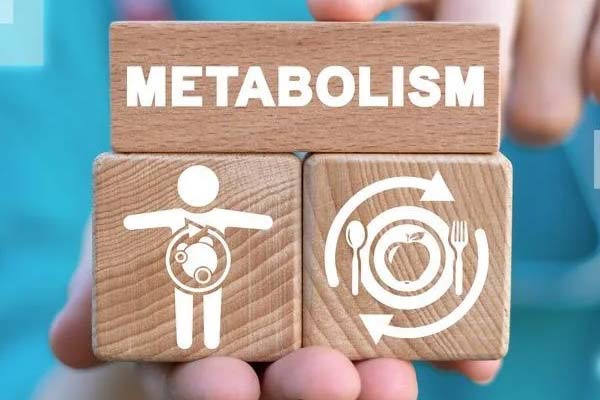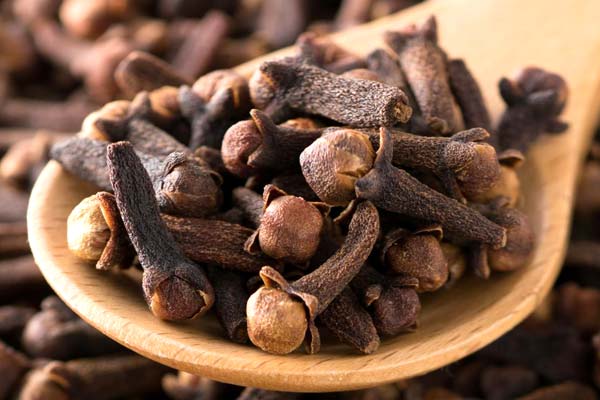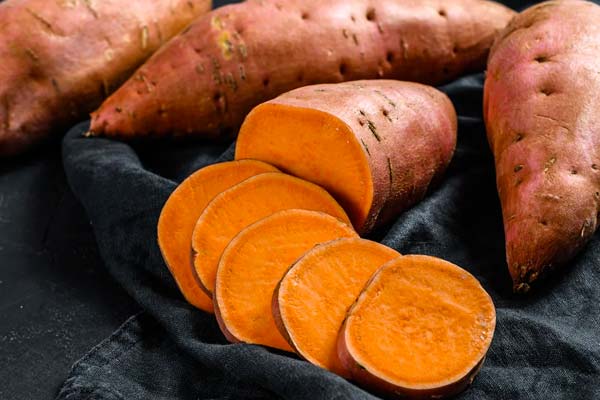عملية الأيض: ما هي وكيف يتم تنظيمها في الجسم؟
تعد عملية الأيض من العمليات الحيوية الأساسية التي تحدث داخل الجسم، وتعني ببساطة تحويل الغذاء إلى طاقة. وتتم هذه العملية عن طريق سلسلة من التفاعلات الكيميائية الحيوية التي تحدث داخل الخلايا، وتعمل على تحويل المواد الغذائية إلى طاقة يستخدمها الجسم لأداء وظائفه الحيوية.
تنقسم عملية الأيض إلى جزئين، البناء (Anabolism) والهدم (Catabolism). حيث يتم في البناء تراكم المواد، بينما يتم في الهدم تكسير المواد. ويستخدم مصطلح الأيض الغذائي للتعبير عن تكسير الطعام داخل الجسم.
وتلعب عملية الأيض دورًا هامًا في حرق السعرات الحرارية وتحويلها إلى طاقة، وبالتالي تساعد على إنقاص الوزن والحفاظ على الصحة العامة للجسم. وتعتبر الأيض عملية معقدة ومتعددة الجوانب، وتتأثر بعدة عوامل مثل العمر والجنس والنشاط البدني والعادات الغذائية.
مفهوم عملية الأيض
تعريف الأيض
عملية الأيض هي مجموعة من العمليات الحيوية التي تحدث داخل الكائنات الحية، وتساعد في تحويل الطاقة الموجودة في الغذاء إلى طاقة يمكن استخدامها من قبل الجسم. وتُعد الأيض عملية حيوية أساسية للحفاظ على حياة الكائنات الحية، حيث تساعد في تنظيم وصيانة الأنسجة والأعضاء والأنظمة الحيوية.
مراحل عملية الأيض
تنقسم عملية الأيض إلى مرحلتين رئيسيتين:
- مرحلة الأنابوليزم (Anabolism): وتعني بناء المواد العضوية، حيث يتم خلالها توليد الطاقة اللازمة لتركيب المواد الحيوية المختلفة، مثل البروتينات والأحماض النووية والكربوهيدرات.
- مرحلة الكاتابوليزم (Catabolism): وتعني تحطيم المواد العضوية، حيث يتم خلالها تحويل المواد الحيوية إلى مواد أخرى بسيطة، مثل الأحماض الأمينية والسكريات والأحماض الدهنية، وتوليد الطاقة اللازمة لدعم الأنشطة الحيوية المختلفة.
تؤثر سرعة الأيض على كمية الطاقة التي يحتاجها الجسم، ويمكن تسريع معدل الأيض باتباع نمط حياة صحي، مثل ممارسة التمارين الرياضية بانتظام والتغذية الصحية والنوم الكافي. ومن الجدير بالذكر أن الأيض يختلف من شخص لآخر، ويتأثر بعدد من العوامل المختلفة، مثل العمر والجنس والوزن والوراثة.
السعرات الحرارية وعملية الأيض
السعرات الحرارية
تعد السعرات الحرارية هي الطاقة التي يحتاجها الجسم للقيام بالأنشطة اليومية، مثل الجري والمشي والتنفس والهضم. وتتأثر حاجة الجسم للسعرات الحرارية بعدة عوامل، مثل الوزن والطول والعمر ومعدل التمثيل الغذائي.
التمثيل الغذائي
يتمثل التمثيل الغذائي في عملية تحويل الطعام إلى طاقة يمكن استخدامها من قبل الجسم. وتتأثر عملية التمثيل الغذائي بعدة عوامل، مثل النوع الغذائي والنشاط البدني والجينات.
يتم تحويل السعرات الحرارية المستهلكة من الطعام إلى طاقة من خلال عملية التمثيل الغذائي. ويتم تحويل الطعام إلى طاقة من خلال عملية الأيض التي تحدث في الخلايا الحية في الجسم.
معدل التمثيل الغذائي
يتأثر معدل التمثيل الغذائي بعدة عوامل، مثل النوع الغذائي والنشاط البدني والجينات. ويمكن زيادة معدل التمثيل الغذائي من خلال ممارسة الرياضة والحركة اليومية وتناول الأطعمة الصحية.
ويمكن تسريع عملية التمثيل الغذائي عن طريق تناول الأطعمة التي تحتوي على مركبات معينة، مثل الكافيين والفلفل الحار والزنجبيل. ويمكن أيضًا تسريع عملية التمثيل الغذائي عن طريق تقليل حجم الوجبات وزيادة تناول الوجبات الصغيرة على مدار اليوم.
وبشكل عام، يمكن الحفاظ على معدل التمثيل الغذائي الصحي من خلال تناول الأطعمة الصحية وممارسة الرياضة والحركة اليومية.
عملية الهدم والبناء
عملية الهدم
تشير عملية الهدم في عملية الأيض إلى تفكيك المواد الغذائية المختلفة في الجسم لإنتاج الطاقة اللازمة للحفاظ على وظائف الجسم الحيوية. وتتم هذه العملية من خلال تحطيم الروابط الكيميائية في الجزيئات الكبيرة، مما يؤدي إلى إطلاق الطاقة المخزنة فيها. ويتم تنفيذ عملية الهدم بواسطة الإنزيمات الموجودة في الجسم.
وتشمل عملية الهدم العديد من العمليات الحيوية المختلفة، بما في ذلك تحطيم الكربوهيدرات والدهون والبروتينات. وتتم هذه العملية في الأمعاء والكبد والعضلات والخلايا الأخرى في الجسم.
عملية البناء
تشير عملية البناء في عملية الأيض إلى تركيب المواد الغذائية المختلفة في الجسم لإنتاج البروتينات والأحماض النووية والدهون والكربوهيدرات اللازمة لبناء الخلايا الحية والأنسجة. وتتم هذه العملية بواسطة الإنزيمات الموجودة في الجسم.
وتشمل عملية البناء العديد من العمليات الحيوية المختلفة، بما في ذلك تركيب البروتينات والأحماض النووية والدهون والكربوهيدرات. وتتم هذه العملية في الخلايا الحية في الجسم.
يجب على الجسم الحفاظ على توازن بين عملية الهدم وعملية البناء لضمان وظائف الجسم الحيوية الصحية. ويمكن تحسين عملية الأيض من خلال تناول الأطعمة الصحية وممارسة الرياضة بانتظام.
الهرمونات وعملية الأيض
الهرمونات وعملية الأيض
الهرمونات هي مواد كيميائية تنتجها الغدد الصماء في الجسم، وتؤثر على عملية الأيض. وتنقسم الهرمونات إلى هرمونات الغدد الصماء والهرمونات الجنسية.
الإنسولين
الإنسولين هو هرمون ينتج في البنكرياس، ويؤثر بشكل كبير على عملية الأيض. يساعد الإنسولين في تحويل السكر إلى طاقة، ويعمل على تنظيم مستوى السكر في الدم. وعندما ينخفض مستوى الإنسولين في الجسم، يمكن أن يحدث ارتفاع في مستوى السكر في الدم، مما يؤدي إلى الإصابة بمرض السكري.
تعمل الخلايا في الجسم على استخدام السكر كمصدر للطاقة، ولكنها لا تستطيع القيام بذلك بدون الإنسولين. يقوم الإنسولين بتحفيز الخلايا في الجسم على استخدام السكر، ويساعد في تخزين السكر في الكبد والعضلات.
ويمكن أن يؤدي نقص الإنسولين في الجسم إلى مرض السكري، الذي يتسبب في ارتفاع مستوى السكر في الدم. ويمكن علاج مرض السكري بإعطاء الجسم جرعات من الإنسولين، والتي تساعد في تنظيم مستوى السكر في الدم.
العوامل المؤثرة في عملية الأيض
الأنشطة البدنية
تعتبر الأنشطة البدنية من العوامل المؤثرة في عملية الأيض، حيث تساعد على زيادة حرق السعرات الحرارية وتحفيز عملية الأيض. وتؤثر هذه الأنشطة بشكل أكبر على الرجال من النساء، حيث يتمتع الرجال بنسبة عضلية أعلى وبالتالي يحتاجون إلى مزيد من الطاقة للحفاظ على هذه العضلات.
القهوة والشاي الأخضر
تحتوي القهوة والشاي الأخضر على مادة الكافيين التي تعمل على تحفيز عملية الأيض وزيادة حرق الدهون. ولكن يجب تناولهما بشكل معتدل، حيث إن تناول الكميات الزائدة من الكافيين يمكن أن يؤدي إلى زيادة معدل ضربات القلب والتسبب في الأرق.
التوابل الحارة
تحتوي التوابل الحارة مثل الفلفل الحار والفلفل الأسود على مادة الكابسيسين التي تعمل على زيادة حرارة الجسم وتحفيز عملية الأيض. كما أنها تساعد على تحسين عملية الهضم وتقليل الشهية.
الزنجبيل والقرفة
تحتوي الزنجبيل والقرفة على مواد فعالة تعمل على تحفيز عملية الأيض وزيادة حرق الدهون. كما أنها تساعد على تحسين عملية الهضم وتقليل الشهية.
خل التفاح
يحتوي خل التفاح على حمض الأسيتيك الذي يعمل على تحفيز عملية الأيض وتسريع حرق الدهون. كما أنه يساعد على تحسين عملية الهضم وتنظيم مستويات السكر في الدم.
الكافيين
يحتوي الكافيين على مواد فعالة تعمل على تحفيز عملية الأيض وزيادة حرق الدهون. ويمكن الحصول على الكافيين من مصادر مختلفة مثل القهوة والشاي والمشروبات الغازية.
يجب الانتباه إلى أن هذه العوامل لا يمكن أن تؤثر على عملية الأيض بشكل كبير إذا لم يتم ممارسة الرياضة بشكل منتظم والحفاظ على نظام غذائي صحي. كما يجب استشارة الطبيب قبل تناول أي من هذه المواد في حالة وجود أي مشاكل
الأمراض والوراثية وعملية الأيض
الأمراض
توجد العديد من الأمراض التي تؤثر على عملية الأيض في الجسم. وتعتبر هذه الأمراض أحد أسباب زيادة أو نقصان وظيفة الغدة الدرقية، والتي تؤدي إلى زيادة أو نقصان في معدل الأيض الأساسي للجسم. ويمكن أن تؤدي هذه الأمراض إلى زيادة الوزن أو فقدانه، وتغيرات في مستوى الطاقة والنشاط البدني.
ومن الأمراض الوراثية التي تؤثر على عملية الأيض، مرض السكري، والذي يؤدي إلى ارتفاع في مستوى السكر في الدم. وتؤثر هذه الحالة على الأيض وعلى القدرة على استخدام الطاقة في الجسم.
الوراثية
تلعب العوامل الوراثية دورًا هامًا في عملية الأيض. وتؤثر العيوب الوراثية في الجينات على قدرة الجسم على استخدام الطاقة وتحويلها إلى الوظائف الحيوية اللازمة للبقاء على قيد الحياة. وتتضمن هذه العيوب الوراثية اضطرابات الأيض الموروثة، والتي تؤدي إلى زيادة أو نقصان في عملية الأيض في الجسم.
ومن الأمثلة على هذه الاضطرابات مرض الفينيل كيتونوريا، والذي يؤدي إلى تراكم مواد ضارة في الجسم، ومرض الهيموكروماتوز، والذي يؤدي إلى تراكم الحديد في الجسم. وتؤدي هذه الحالات إلى تغيرات في معدل الأيض وفي مستوى الطاقة في الجسم.
ويعد فهم عملية الأيض والعوامل التي تؤثر عليها أمرًا مهمًا للحفاظ على صحة الجسم والوقاية من الأمراض المرتبطة بها. ويمكن تحسين عملية الأيض من خلال تبني نمط حياة صحي ومتوازن، بما في ذلك تناول الأغذية الصحية وممارسة الرياضة بانتظام.






